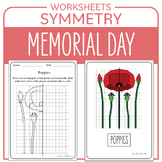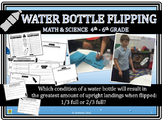16 results
Free high school geometry laboratories

Points, Lines, Planes, Segments, and Angles.
An Exploration into Geometry using Geometry Software, such as Geogebra(free open source). Students create, explore, analyze, define, and compare points, lines, planes, segments, and angles using online open source Geometry Software such as Geogebra. Students will write and reflect mathematics. Students will use patterns along with dynamic technology to masters Geometry Standards.
This is the beginning of a series of activities aligned to the CA State Standards for Geometry and Common Core S
Subjects:
Grades:
7th - 12th
Types:
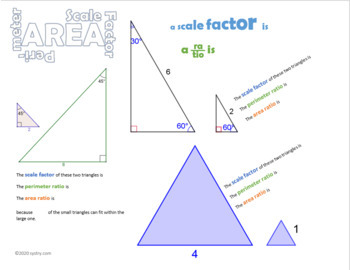
Scale Factor Perimeter Area Investigation
I no longer feel comfortable selling this resource. Teaching evolves and there's a better activity out there. Please check out Desmos Classroom. This is currently the activity that I created that I'm most proud of. My students get it after they have interacted with the shapes on screen. No more cutting and making envelopes.I'll leave this product up but available as a free resource. Please let me know in the comments what you think.---------This investigation helps students understand the relati
Subjects:
Grades:
7th - 10th
Types:
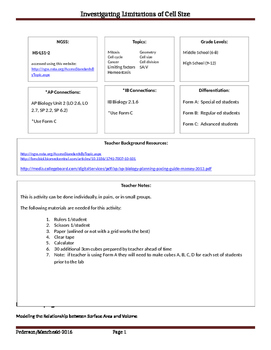
Investigating Cell Size
The investigation includes students making and working with manipulatives to better understand the concept of surface area to volume ratio and the impact on living cells. This investigations includes 3 forms created for ease in a differentiated classroom
Subjects:
Grades:
7th - 12th

PhET Trig Tour --Unit Circle/ Sine Waves
This is a free resource as I am looking for teacher feedback--please use and review to help make this another high quality lab! This lab is1 of 50, which was made to pair with free PhET online simulations, which allow hands on engagement in a distance learning setting. Simply upload to google classroom. Make a student copy and let students fill in. Answer Key Included (So copy paste in a safe space :) Lab Objectives:Students will be able to assess sin and cos functions both as parts of triangle
Subjects:
Grades:
9th - 12th
Types:
CCSS:

Proof of the Pythagorean Theorem
This is a hands on geometric proof of the Pythagorean Theorem. Students arrange four congruent right triangles two different ways on a large square to show that the sum of the areas of the squares formed by the legs equals the area of the square formed by the hypotenuse. The only required materials besides the handout are scissors for each student or team. Rulers are not required because the template already includes unit markings.
Subjects:
Grades:
7th - 10th
Types:
CCSS:

Quadrilaterals Possible or Impossible
Students will use the properties of quadrilaterals to decide if a figure with the given characteristics is possible or impossible to create. If it is possible, than they can use Geometer's Sketchpad or other software to create it.
Subjects:
Grades:
8th - 12th
Types:

Area with index cards
Have you ever wondered where the area formulas for triangles, trapezoids and parallelograms came from? In this activity, I walk you through how to derive these formulas using index cards. The activity is designed to build strong, conceptual understandings while creating a hands-on product that they can keep in their notebooks for years to come!
Subjects:
Grades:
4th - 12th
Types:

Pi Day Math Lab
This Pi Day Math Lab asks students to measure several circular objects to estimate the value of pi.
Subjects:
Grades:
7th - 12th
Types:
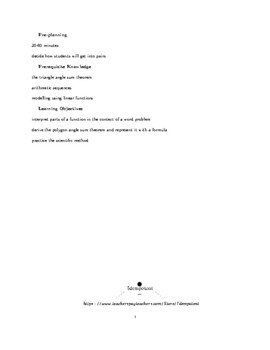
Polygon Angle Sum Lab
This lab has students apply their knowledge of the Triangle Angle Sum Theorem to derive the sum of the measures of the interior angles of a polygon (the Polygon Angle Sum Theorem). As opposed to having students memorize a formula, the lab approach requires students to be creative and synthesize multiple mathematical ideas from geometry and algebra.Pre-planning:30-60 minutesdecide how students will get into pairsPrerequisite Knowledge:the triangle angle sum theoremarithmetic sequencesmodelling u
Subjects:
Grades:
8th - 10th
Types:
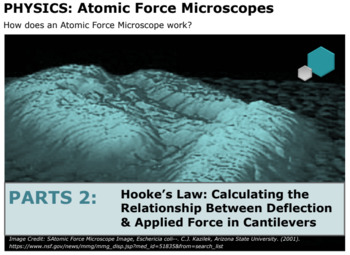
AFM: PART 2: Calculating Hooke’s Law:
DRIVING QUESTION: How does an atomic microscope work?What is an atomic force microscope (AFM), and how do they use forces to image a surface at the nanoscale? This four-part hands-on series explores the mechanics, optics, and instrumentation of an AFM. Part 1 (Understanding How Forces Impact Cantilevers & Springs) provides a qualitative exploration into the forces within a cantilever and the relationship to deflection. Part 2 (Hooke’s Law: Calculating the Relationship Between Deflection &
Grades:
9th - 12th
Types:
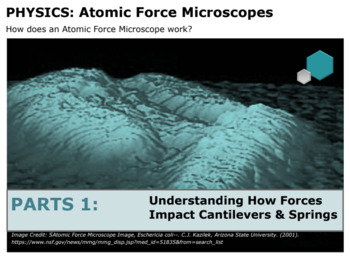
AFM: PART 1: Understanding How Forces Impact Cantilevers & Springs
DRIVING QUESTION: How does an atomic microscope work?What is an atomic force microscope (AFM), and how do they use forces to image a surface at the nanoscale? This four-part hands-on series explores the mechanics, optics, and instrumentation of an AFM. Part 1 (Understanding How Forces Impact Cantilevers & Springs) provides a qualitative exploration into the forces within a cantilever and the relationship to deflection. Part 2 (Hooke’s Law: Calculating the Relationship Between Deflection &
Grades:
9th - 12th
Types:

AFM: PARTS 1-4: Activity Sheets (ONLY)
DRIVING QUESTION: How does an atomic microscope work?What is an atomic force microscope (AFM), and how do they use forces to image a surface at the nanoscale? This four-part hands-on series explores the mechanics, optics, and instrumentation of an AFM. Part 1 (Understanding How Forces Impact Cantilevers & Springs) provides a qualitative exploration into the forces within a cantilever and the relationship to deflection. Part 2 (Hooke’s Law: Calculating the Relationship Between Deflection &
Grades:
9th - 12th
Types:
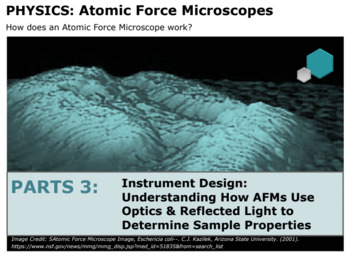
AFM: PART 3: Understanding How AFMs Use Optics & Incident Light
DRIVING QUESTION: How does an atomic microscope work?What is an atomic force microscope (AFM), and how do they use forces to image a surface at the nanoscale? This four-part hands-on series explores the mechanics, optics, and instrumentation of an AFM. Part 1 (Understanding How Forces Impact Cantilevers & Springs) provides a qualitative exploration into the forces within a cantilever and the relationship to deflection. Part 2 (Hooke’s Law: Calculating the Relationship Between Deflection &
Grades:
9th - 12th
Types:
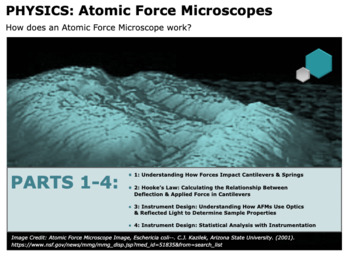
AFM: PARTS 1-4: How does an Atomic Force Microscope work?
DRIVING QUESTION: How does an atomic microscope work?What is an atomic force microscope (AFM), and how do they use forces to image a surface at the nanoscale? This four-part hands-on series explores the mechanics, optics, and instrumentation of an AFM. Part 1 (Understanding How Forces Impact Cantilevers & Springs) provides a qualitative exploration into the forces within a cantilever and the relationship to deflection. Part 2 (Hooke’s Law: Calculating the Relationship Between Deflection &
Grades:
9th - 12th
Types:
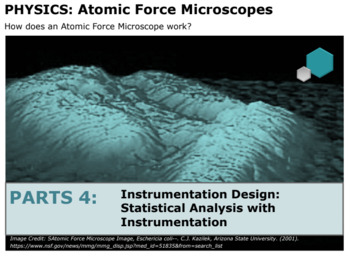
AFM: PART 4: Statistical Analysis with Instrumentation
DRIVING QUESTION: How does an atomic microscope work?What is an atomic force microscope (AFM), and how do they use forces to image a surface at the nanoscale? This four-part hands-on series explores the mechanics, optics, and instrumentation of an AFM. Part 1 (Understanding How Forces Impact Cantilevers & Springs) provides a qualitative exploration into the forces within a cantilever and the relationship to deflection. Part 2 (Hooke’s Law: Calculating the Relationship Between Deflection &
Grades:
9th - 12th
Types:
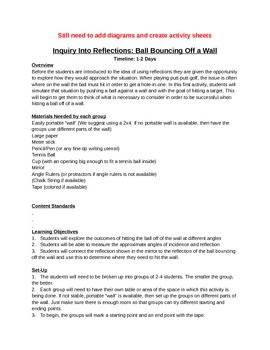
Ball/Laser Lab
This is meant to go with the Putt Putt Project. It is an exploratory activity on angle of incidence and angle of collision. Early draft.
Grades:
9th - 10th
Types:
Showing 1-16 of 16 results

